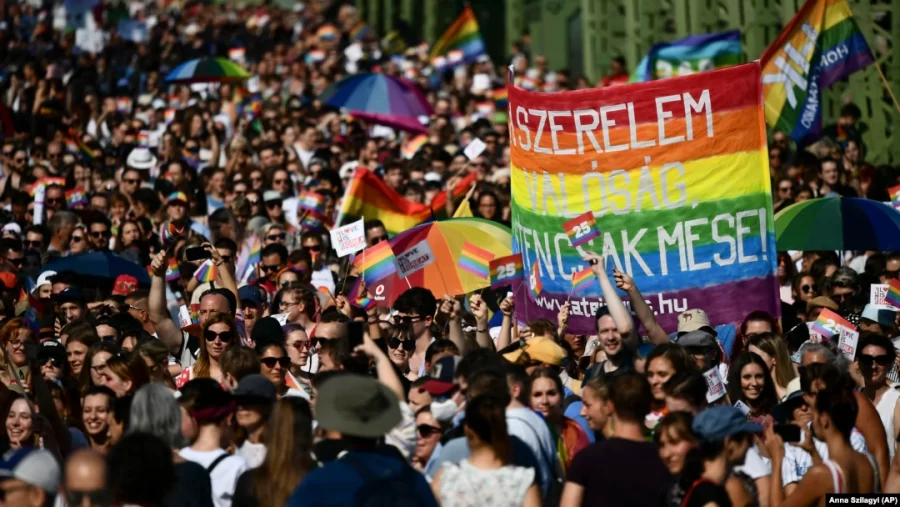Queerness has crossed cultures and time
June 8, 2021
“Oh, but had the artisan who made me created me instead – a worthy woman.”
This striking line written by medieval Rabbi Kalonymus ben Kalonymus ben Meir was one of the first things I showed my Jewish family last summer to explain that I am transgender.
The quote above is from Kalonymus’ “Prayer for Transformation” written in 1322 C.E. Many historians and theologians consider the medieval rabbi, who was assigned male at birth, to have been transgender. (Noting the complexity of assigning modern queer terms to historical figures, I will use the neutral pronouns they/them.)
In this text, Kalonymus laments their assigned gender in a series of heartbreaking calls to God, begging to be transformed into the woman they were meant to be. Kalonymus’ prayer helped my parents understand my coming out as a woman of transgender experience in a Jewish cultural and religious context, which eased the transition into being my true self in and out of the home.
But Kalonymus’ work should not be brushed off as an outlier ahead of its time. They are part of a longstanding discussion about sexual orientation and gender identity in Jewish thought. In the Talmud, a work of rabbinic literature first compiled between third and fifth centuries C.E., writers detail at least six genders referenced in ancient biblical texts.
The most notable to my story is saris, a term mentioned over 500 times in the Talmud describing people who are assigned male at birth but develop feminine characteristics later in life: somewhat analogous to the modern-day definition of a transgender woman. Again, cultural commentary from millennia ago reflects my own life experience in a context familiar to my family.
These early precedents demonstrate how one can integrate any gender identity or sexual orientation, for example, into their own cultural background. I often see reactionaries wrongfully argue that the LGBTQ+ community is a fad. But reducing our identities to a trend not only trivializes our life experiences but willfully ignores generations of queer history.
The hijra of India and Pakistan, kathoey of Thailand, the two-spirit communities within Native American tribes, the Pajubá secret language in Brazil, the lyric poems of the ancient Greek poet Sappho, and the motsoalle of Lesotho in southern Africa all enumerate the continuous existence of LGBTQ+ people around the world.
There are so many more examples of bi- and homosexuality, as well as transgender and gender non- conforming identities, in other cultures’ histories, too. And increased research into these topics has made LGBTQ+ history just a Google search away.
With that in mind, there is no excuse for denying someone’s identity because you don’t understand and aren’t willing to learn. Former Hasidic (ultra-orthodox) rabbi and trans woman Abby Chava Stein describes in her book, “Becoming Eve” (2019), how her parents stopped speaking with her altogether after she came out as trans. She provided them with the Jewish context for her identity, including many of the examples in this column, but to no avail. Though her journey starts with the pain of rejection, Stein describes how she found her place again in the Jewish community, marking her transition with a Bat Mitzvah at a synagogue in New York City.
I am not, by any means, including Abby Chava Stein’s story to discourage those whose family is not accepting of LGBTQ+ relatives. I am, instead, including her story to instill hope in those who struggle to reconcile their queer identity with their cultural identity. Seeking out examples of your own experiences in your cultural background and history not only helps parents and peers contextualize your identity but can also relieve your internalized sense of rejection.
The history of LGBTQ+ communities being pushed to the outskirts of society and the lack of representation of LGBTQ+ people within other cultural communities can lead one to think that being queer is a mutually exclusive identity. No one identity is exclusionary, however, and it is vital to understand that you belong. As such, an integral part of self-acceptance is picturing a place for yourself within your own community.
Abby Chava Stein’s story showed me that even though parts of my Jewish community would shut me out for who I am, there will always be parts eager to find a place for me and other LGBTQ+ people as Jews. By connecting my culture with my queerness through the medieval writings of Rabbi Kalonymus and ancient Jewish texts depicting people like me, I can both accept myself and find a place of intersectional acceptance among the Jewish community in which I was raised, which has been a comfort and a delight to both me and my family.

